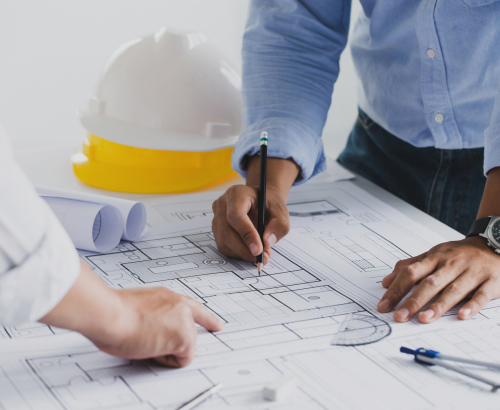The Case for Adaptive Reuse in Design: A Vital Opportunity for Architects

Adaptive reuse, the practice of repurposing existing buildings, is no longer a niche idea. It is quickly becoming a necessary solution for a built environment under pressure to do more with less. In a world focused on maximizing asset value, cost-effectiveness and sustainability, adaptive reuse offers a practical path forward that architects and owners can no longer afford to ignore.
Of course, it is not always easy to tell whether something is just a trend or a lasting shift. One signal is whether it solves real challenges for owners. In our work, we often hear that a mix of financial drivers and long-term strategic goals shapes capital plans. Adaptive reuse speaks directly to both, which is why it is gaining momentum across sectors.
Two Key Forces Driving Adaptive Reuse
- The COVID Aftermath and Shifting Work Patterns
The COVID-19 pandemic, combined with the widespread shift to remote work, left many office spaces and commercial buildings vacant or underused. Instead of letting these properties sit idle, forward-thinking developers are embracing adaptive reuse, transforming office towers into data centers, shopping malls into mixed-use developments and old offices into lab spaces for life sciences.
A prime example is Utah’s Fashion Place Mall, where a portion of the property has been reimagined as a thriving mixed-use space with offices, retail and dining. With demand for flexible, high-quality spaces growing, we expect this trend to accelerate.
For new construction, adaptability is key. Designing buildings with future repurposing in mind ensures longevity and reduces costly overhauls down the line. Industries like health care and life sciences, which evolve rapidly, particularly benefit from such flexible planning.
- Urbanization and Skyrocketing Land Costs
As cities grow, available land is becoming scarce, and the price of development plots continues to soar. This is driving up costs for new construction and making adaptive reuse an increasingly attractive alternative. Repurposed buildings offer a way to meet the needs of commercial, residential and logistics facilities without incurring massive land acquisition costs.
For example, health care institutions in dense urban areas are repurposing old wings or entire buildings to accommodate new medical technologies, saving both time and money. Similarly, universities are converting older campus buildings into state-of-the-art science, technology, engineering and math facilities, ensuring that their spaces remain relevant for decades.
Why Adaptive Reuse is the Smart Choice
Adaptive reuse provides architects, owners and developers with several key advantages:
- Cost Efficiency: Reusing existing structures eliminates the need for expensive land purchases and lengthy site preparations, allowing projects to proceed faster and more affordably.
- Sustainability: The environmental impact of demolition and new construction is significant. By repurposing old buildings, developers avoid unnecessary waste and reduce the demand for new materials, making adaptive reuse a greener solution.
- Extended Asset Life: Buildings designed with future adaptability in mind offer better long-term value. Spaces can be easily reconfigured as needs evolve, providing owners with greater flexibility and extended return on investment.
How to Integrate Adaptive Reuse into Your Practice
Identifying the right clients who could benefit from adaptive reuse is a critical first step. This process goes beyond evaluating basic demographics or buying tendencies. It requires understanding the motivation behind a client’s capital plans. Gaining insight into what drives investment decisions can reveal new opportunities, whether with new prospects or existing clients.
When evaluating projects and opportunities, architects and designers should listen carefully to owners' long-term goals and look for signs that adaptive reuse could be a fit. For example, are there underused properties in their portfolio? Are there challenges in securing land in crowded urban areas? Leveraging the benefits of adaptive reuse can improve project outcomes while supporting long-term capital strategies.
Another important step is to look internally and assess whether your services demonstrate experience in adaptive reuse. Showcasing case studies of successful projects that highlight the benefits of adaptive reuse can introduce clients to the concept and reinforce that they are already working with a knowledgeable partner. This approach is especially valuable if the company is planning to focus on this area and build a targeted go-to-market strategy.
Seize the Adaptive Reuse Opportunity
As urbanization intensifies and the demand for flexible, future-proof spaces grows, adaptive reuse will continue to be a powerful strategy. Its ability to cut costs, reduce environmental impact and extend the value of assets makes it a compelling solution for architects and owners alike.
Designers who understand where and how adaptive reuse fits into clients' capital strategies will be best positioned to lead. By bringing these solutions forward, design teams can unlock new opportunities, support long-term goals and strengthen their roles as strategic partners in a changing market.

.png)

